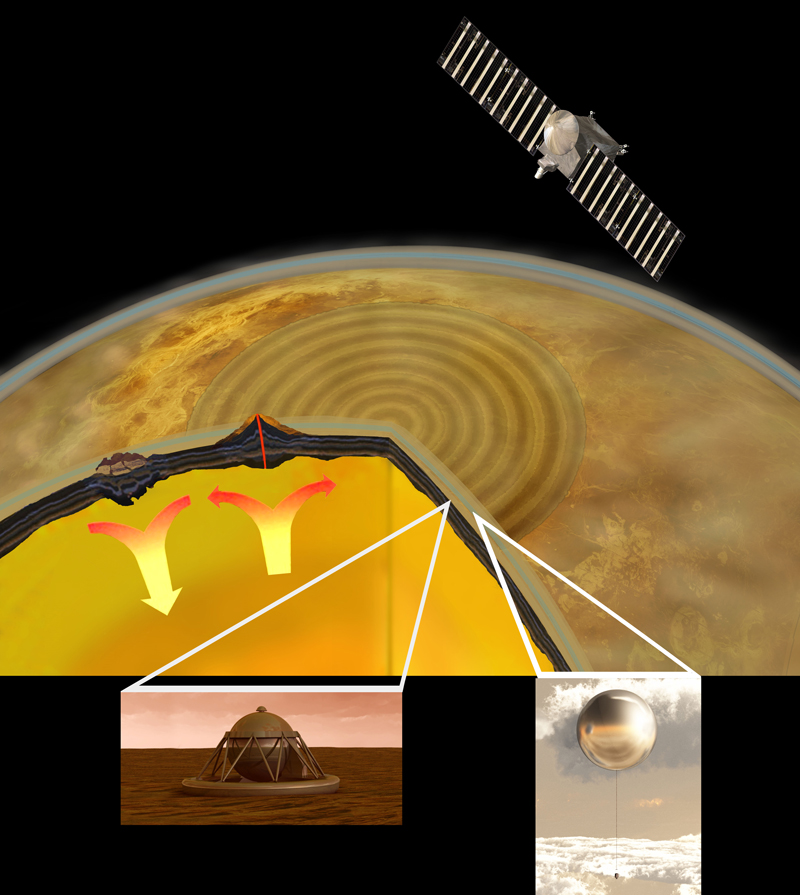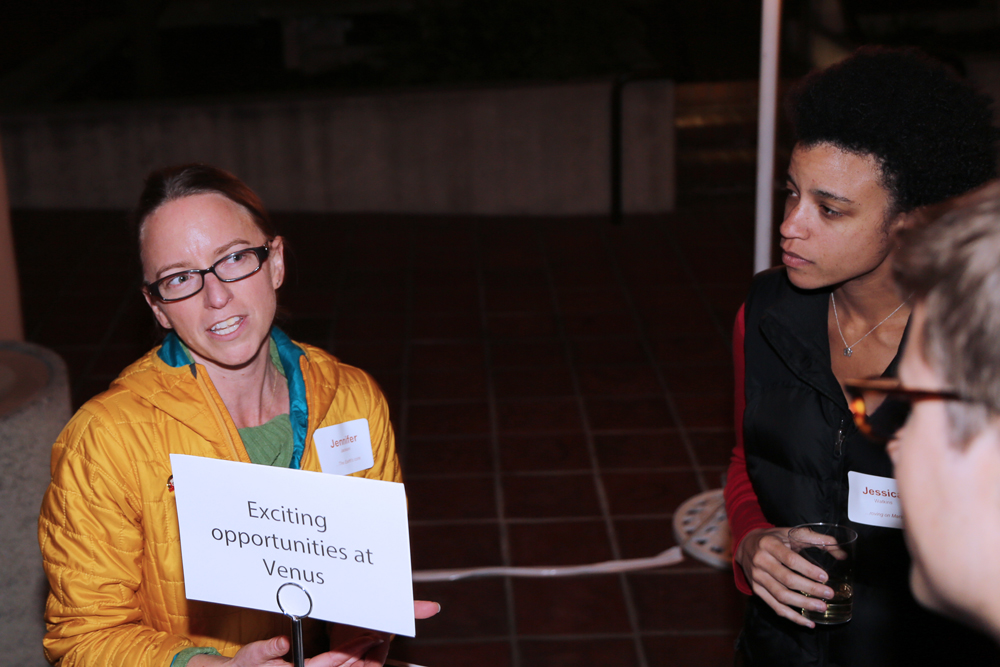Technical Development - Completed December 31, 2017
Techniques and Technologies for Investigating the Interior Structure of Venus
Final Report
Jennifer M. Jackson (California Institute of Technology)
Campus PI

James A. Cutts (Jet Propulsion Laboratory)
JPL PI
Project Participants:
- California Institute of Technology:
Gregory J. Finkelstein**, Voon Hui Lai*, Justin Ko**, Itaru Ohira* (visiting student from Tohoku University, Japan), Olivia Pardo*, Tyler Perez (undergraduate)*, Natalia V. Solomatova*, David J. Stevenson, Victor Tsai, Zhongwen Zhan - Jet Propulsion Laboratory:
Tibor Durgonics* (visiting student from Danish Technical University, Denmark), Siddharth Krishnamoorthy**, Attila Komjathy, Michael Pauken, Suzanne Smrekar, Giorgio Savastano* (visiting student from University of Rome “La Sapienza”, Italy), Gerry Walsh - External participants:
Institut Supérieur de l'Aéronautique et de l'Espace-SUPAERO (ISAE, France): Quentin Brissaud* (now postdoc at Caltech), Ervan Kassarian, Léo Martire**, David L. Mimoun, and Raphaël Garcia
Institut de Physique du Globe de Paris (IPGP, France): Balthasar Kenda* and Philippe Lognonné
University of California Los Angeles (UCLA, USA): Thomas Navarro** and Gerald Schubert
Laboratoire de Météorologie Dynamique (LMD/IPSL, France): Sebastien Lebonnois
* PhD Students
**Postdoctoral Scholars
Overview
The goal of our program is to develop innovative techniques and technologies for investigating the interior structure of Venus. The KISS Technical Development Program has enabled major progress towards this end. The infrasound technique for seismic investigation of Venus has been firmly established as a credible approach for studying the interior of Venus. The study has also fostered a number of productive interdisciplinary collaborations that would not have been possible otherwise, including the genuine collaboration of the JPL team members with mineral physicists at Caltech. The shared goal of understanding the interior of Venus is within reach.

Figure 1. Venus does not exhibit plate tectonics but tectonic and volcanic features must reflect the structure and dynamics of the planet’s interior. Seismic events can be used to probe the structure and on Venus can be observed from three vantage points. The surface platform (left) detects seismic wave in the conventional way but requires sensors and systems that operate at high temperatures for extended periods of time. The balloon platform, operating at altitude of 53–55 km at Earth-like temperatures detects infrasonic waves from Venus quakes. The orbital platform (upper right) acquires a synoptic view of the planet and detects optical and infrared signatures of seismic events.
Key areas of accomplishment:
- Demonstration of the feasibility of a balloon acoustic monitoring system by conducting a flight experiment on Earth. This flight experiment focused on using barometer instruments on a tethered helium-filled balloon in the vicinity of a known seismic source generated by a seismic hammer, using ground sensors to benchmark signals (e.g., Krishnamoorthy et al. 2018; Martire et al. 2018, submitted to GRL).
- Numerical modeling (finite difference simulations) of atmospheric acoustic and gravity waves created by seismic surface waves propagating in Venus interior is performed in a windy and attenuating atmosphere. New models of planetary boundary layer and atmosphere/surface interactions have been created to enhance the deep atmosphere dynamics and its interaction with surface topography (Lebonnois and Schubert, Nat. Geosci. 2017, Lebonnois et al. 2018, submitted)
- A complete study of a suite of candidate samples important for understanding Venus: silicate amorphous phases (glasses), hydrous sulfates, hydrous and anhydrous oxides, over a range of Earth-like and hypothesized Venus conditions (e.g., Finkelstein et al. 2017, Solomatova et al. 2017, Perez et al. 2017), with key findings that some phases retain their “water” under significantly high temperatures and pressures (Ohira et al. 2017) and others have volumetric collapse phase transitions at shallow and deep crustal conditions. These samples will be exposed to Venusian surface-atmospheric conditions at the GEER facility, as part of our follow-on activities.

Jennifer Jackson and graduate student Natalia Solomatova conducting measurements of candidate Venus analogues, at the Advanced Photon Source

Networking at the 2015 Space Connection: Jennifer Jackson, Jessica Watkins (GPS Chair's Postdoctoral Scholar; AGEP Fellow), and future Venusians
